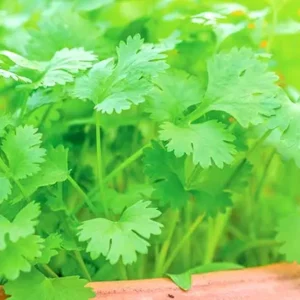Golden Self blanching variety of Celery
Description of Golden Self blanching variety of Celery.
The Golden Self Blanching variety of celery is prized for its golden-yellow stalks and delicate flavor. This variety is known for its self-blanching characteristic, meaning the stalks naturally turn a pale yellow color as they mature, eliminating the need for manual blanching techniques. The Golden Self Blanching celery has a milder taste compared to traditional green celery varieties, making it a popular choice for raw consumption, salads, and garnishes. It is also valued for its crisp texture and versatility in culinary applications.
Planting instructions for Golden self variety of Celery.
To plant the Golden Self Blanching variety of celery:
- Timing: Plant Golden Self Blanching celery in early spring for a summer harvest, or in late spring for a fall harvest, depending on your climate. Celery prefers cooler temperatures for optimal growth.
- Seed starting: Start Golden Self Blanching celery seeds indoors 10-12 weeks before the last expected frost date in your area. Use seed starting trays filled with a seed starting mix. Plant the seeds shallowly, as celery seeds require light to germinate. Keep the soil consistently moist and maintain a temperature of around 70°F (21°C) for germination.
- Transplanting: Transplant the celery seedlings into the garden once they have developed several true leaves and the danger of frost has passed. Space the seedlings 8-10 inches apart in rows spaced 18-24 inches apart.
- Site selection: Choose a location with full sun to partial shade and well-draining soil rich in organic matter. Celery prefers soil with a pH between 6.0 and 7.0. Ensure the soil remains consistently moist throughout the growing season.
- Watering: Keep the soil consistently moist, as celery requires ample water to thrive. Avoid overhead watering to prevent the development of fungal diseases. Mulch around the plants to help retain soil moisture and suppress weeds.
- Fertilization: Celery is a heavy feeder and benefits from regular fertilization. Apply a balanced fertilizer or compost tea every few weeks throughout the growing season to promote healthy growth.
- Pest and disease management: Monitor for common celery pests such as aphids, celery leaf miners, and slugs. Implement organic pest control methods as needed. Additionally, keep an eye out for diseases such as celery blight and septoria leaf spot, and promptly remove and destroy infected plants to prevent the spread.
- Harvesting: Harvest Golden Self Blanching celery stalks when they reach the desired size, typically around 12-18 inches in length. Cut the stalks at the base with a sharp knife, leaving the plant intact to continue producing. Celery can be harvested continuously as needed throughout the growing season.
Description of Golden Self blanching variety of Celery.
The Golden Self Blanching variety of celery is prized for its golden-yellow stalks and delicate flavor. This variety is known for its self-blanching characteristic, meaning the stalks naturally turn a pale yellow color as they mature, eliminating the need for manual blanching techniques. The Golden Self Blanching celery has a milder taste compared to traditional green celery varieties, making it a popular choice for raw consumption, salads, and garnishes. It is also valued for its crisp texture and versatility in culinary applications.
Planting instructions for Golden self variety of Celery.
To plant the Golden Self Blanching variety of celery:
- Timing: Plant Golden Self Blanching celery in early spring for a summer harvest, or in late spring for a fall harvest, depending on your climate. Celery prefers cooler temperatures for optimal growth.
- Seed starting: Start Golden Self Blanching celery seeds indoors 10-12 weeks before the last expected frost date in your area. Use seed starting trays filled with a seed starting mix. Plant the seeds shallowly, as celery seeds require light to germinate. Keep the soil consistently moist and maintain a temperature of around 70°F (21°C) for germination.
- Transplanting: Transplant the celery seedlings into the garden once they have developed several true leaves and the danger of frost has passed. Space the seedlings 8-10 inches apart in rows spaced 18-24 inches apart.
- Site selection: Choose a location with full sun to partial shade and well-draining soil rich in organic matter. Celery prefers soil with a pH between 6.0 and 7.0. Ensure the soil remains consistently moist throughout the growing season.
- Watering: Keep the soil consistently moist, as celery requires ample water to thrive. Avoid overhead watering to prevent the development of fungal diseases. Mulch around the plants to help retain soil moisture and suppress weeds.
- Fertilization: Celery is a heavy feeder and benefits from regular fertilization. Apply a balanced fertilizer or compost tea every few weeks throughout the growing season to promote healthy growth.
- Pest and disease management: Monitor for common celery pests such as aphids, celery leaf miners, and slugs. Implement organic pest control methods as needed. Additionally, keep an eye out for diseases such as celery blight and septoria leaf spot, and promptly remove and destroy infected plants to prevent the spread.
- Harvesting: Harvest Golden Self Blanching celery stalks when they reach the desired size, typically around 12-18 inches in length. Cut the stalks at the base with a sharp knife, leaving the plant intact to continue producing. Celery can be harvested continuously as needed throughout the growing season.





